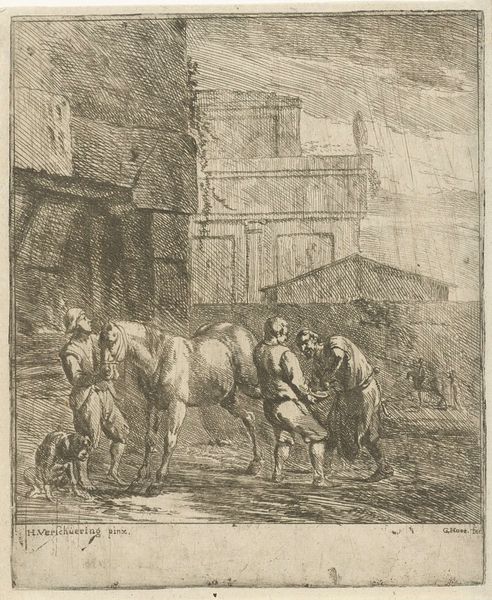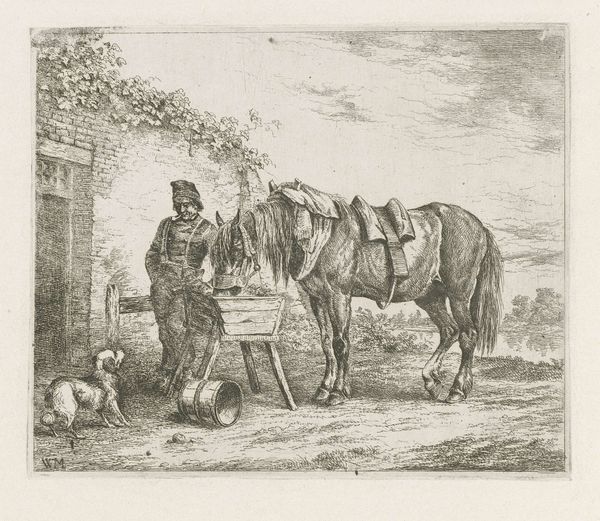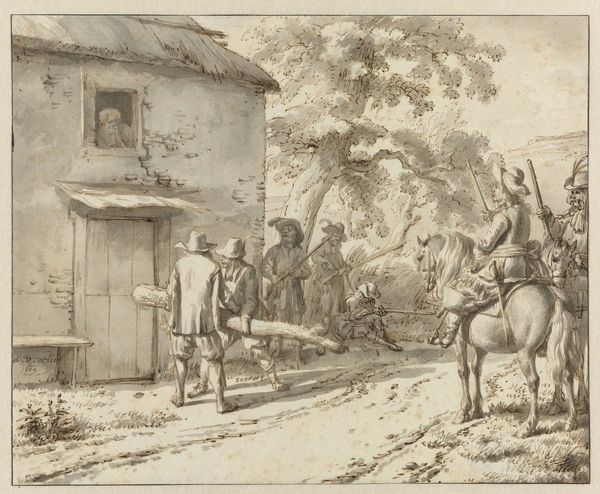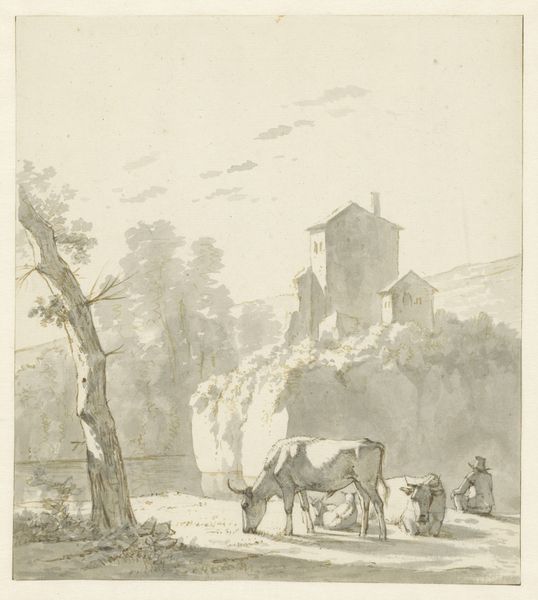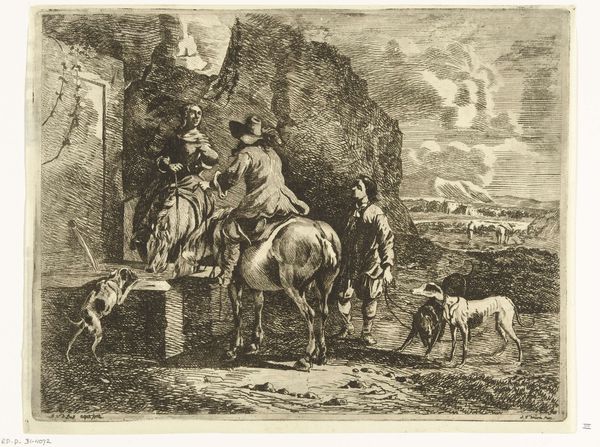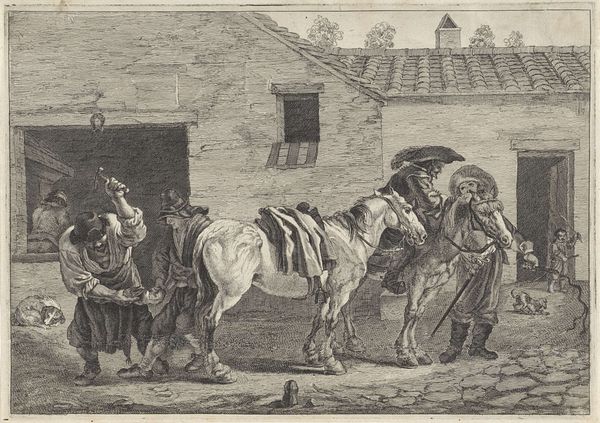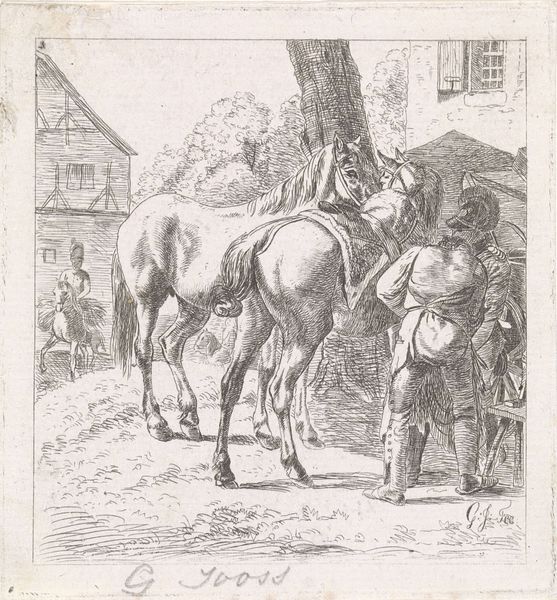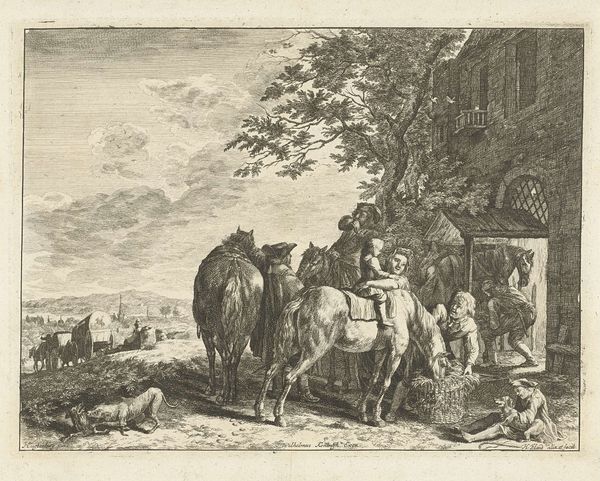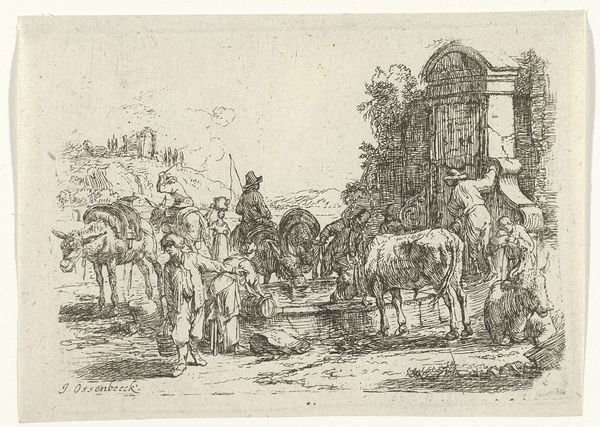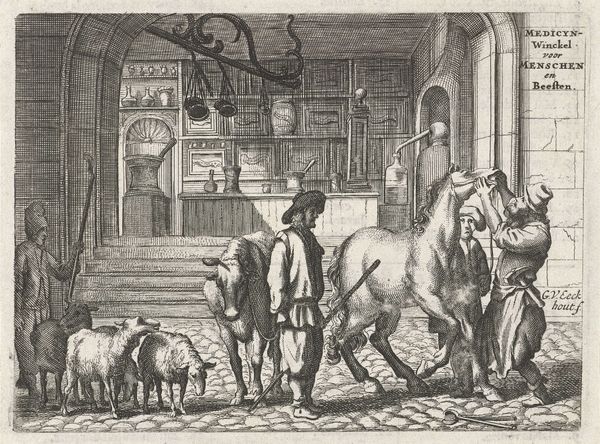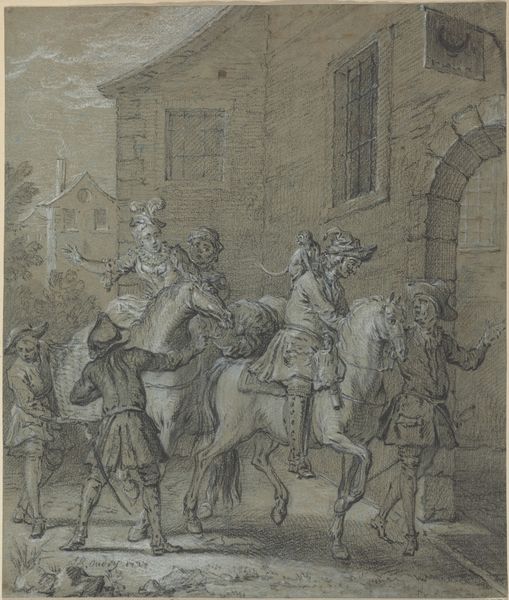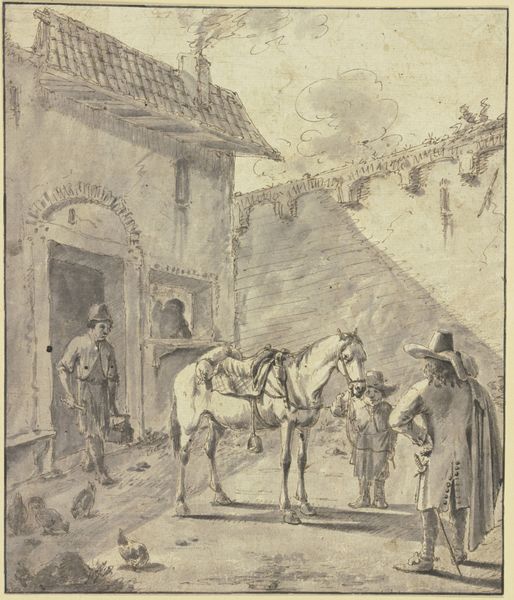
print, engraving
#
baroque
# print
#
landscape
#
figuration
#
horse
#
genre-painting
#
engraving
Dimensions: height 181 mm, width 150 mm
Copyright: Rijks Museum: Open Domain
This is Gerard Hoet's etching, made sometime between 1648 and 1733, depicting a scene of a farrier at work. Here, the central motif is the horse itself, an animal laden with symbolic weight across millennia. Consider the horse as a symbol of power and nobility, tracing back to ancient Roman equestrian statues, where emperors asserted their dominion. Yet, here, the horse is subject to the farrier’s labor, a subjugation of power to necessity. This scene echoes in countless depictions of human-animal interaction—from the myth of Chiron, the wise centaur, to Dürer's engravings of horses, each bearing witness to the complex dance between humanity and nature. The gesture of the farrier—kneeling, touching, and tending to the horse's hoof—is also potent, evoking images of healing and care. Through time, this act evolves, appearing in Christian art as the healing touch of saints. In the collective memory, the horse becomes a conduit—a vessel through which humanity expresses both mastery and compassion. This interplay continues, resonating deep within our subconscious.
Comments
No comments
Be the first to comment and join the conversation on the ultimate creative platform.
